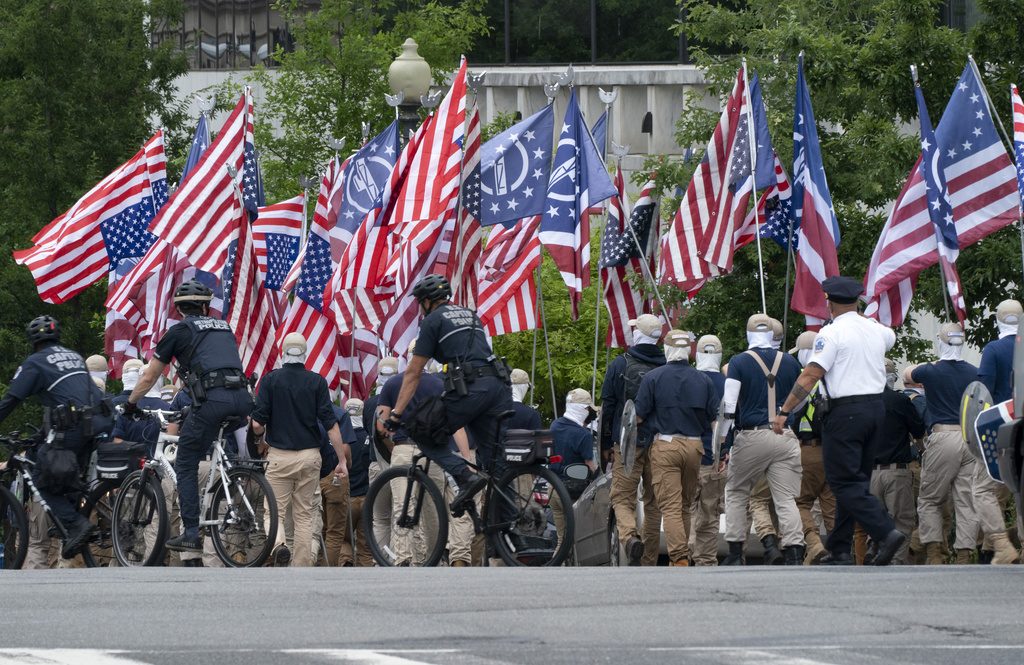Flags are important symbols and can evoke strong emotions depending on the context. Flying a U.S. flag upside down as a form of protest has existed for at least 50 years.
Legal precedents related to flag display
Although flags representing nations are probably the most common, flags may also symbolize other causes. For example, a rainbow flag has been commonly used to symbolize LGBTQ+ pride.
The earliest case to reach the Supreme Court over flag display was in 1907, before courts applied First Amendment protections against state laws. In that case, the Supreme Court upheld a Nebraska law limiting the use of the U.S. flag in advertising (Halter v. Nebraska). However, in 1931, the court invalidated a California law that prohibited individuals from raising a red flag, which was a symbol of international communism. The court ruled that expressive conduct is a free speech right. (Stromberg v. California).
Symbolic speech has been recognized as First Amendment-protected speech by the U.S. Supreme Court at least since Tinker v. Des Moines in 1969. That case involved schoolchildren who wore black armbands to protest the Vietnam War.
Most notably in Texas v. Johnson (1989) and United States v. Eichman (1990), the Supreme Court ruled that protestors had the right to burn the U.S. flag in protest. It had ruled in similar fashion in Street v. New York (1969).
Origin of flying flag upside down
Flags were once more commonly seen at sea than on land. This is because most people know what country they are traversing, while the identity of a ship at sea would be harder to ascertain. Especially in times of war, it was important to be able to distinguish friend from foe, which could be either a foreign nation or a pirate ship. Nick Garren has argued that the practice of flying a flag upside down was used by ships that were in distress, and only much later became a symbol of political protest.
The U.S. flag code, which is not legally enforceable, specifically says that the flag is not to be inverted “except as a signal of dire distress in instance of extreme danger to life or property.”
Use of inverted flags as protests
The notion of flying a flag upside down in protest appears to date back at least 50 years. In Spence v. Washington (1974), the Supreme Court upheld the right of a student to display a U.S. flag upside down from his dorm room with a black peace sign taped on it.
The practice of using an inverted sign as a protest has subsequently been used to express dissent from both the right and the left. As protestors stormed the Capitol Building on Jan. 6, 2021, some carried inverted flags in support of Trump who believed that his reelection loss was due to fraud at the polls. In 2022, Progressives used an inverted sign to protest the overturning of Roe v. Wade, a case that upheld a woman’s right to abortions. Later that year, supporters of Donald Trump used the flag to protest the FBI search of his Mar-a-Lago residence that was related to classified documents he had taken when he left office.
As travelers gathered from far and wide in February 2025 to view nature’s annual “firefall,” in which the evening sun makes El Capitan’s Horsetail Fall appear to be molten lava, they also witnessed an upside down flag on the granite cliff. Yosemite employees apparently placed it there to protest the cost-cutting measures, including personnel cuts, that President Donald J. Trump introduced at the beginning of his second nonconsecutive term in office.
Controversy over inverted flag at Supreme Court Justice Alito’s house
In May 2024, pictures emerged of an inverted flag that had apparently been flown outside Justice Samuel Alito’s house on Jan. 17, 2021, not long after the Jan. 6 riot at the Capitol.
Critics, viewing this as a sign that he could not be impartial on cases involving the 2020 election results, demanded that he recuse himself from any related cases. Alito responded that his wife had posted the flag in protest of derogatory and vulgar signs in a neighbor’s yard and not in solidarity with Washington protestors.
Alito drew additional controversy when an “Appeal to Heaven,” or Pine Tree, flag was flown outside his beach house in New Jersey in July and September of 2023. The flag originated in John Locke’s reference to revolution as “an appeal to heaven” and dates back to the Revolutionary War. It was carried by some rioters during the attack on the Capitol Building and has been associated with those hoping to expand the influence of religious faith in American life .
The flag controversies demonstrate that symbols can evoke different thoughts and emotions from different individuals and that context is often quite important in interpreting their meaning.
John R. Vile is a professor of political science and dean of the Honors College at Middle Tennessee State University.

